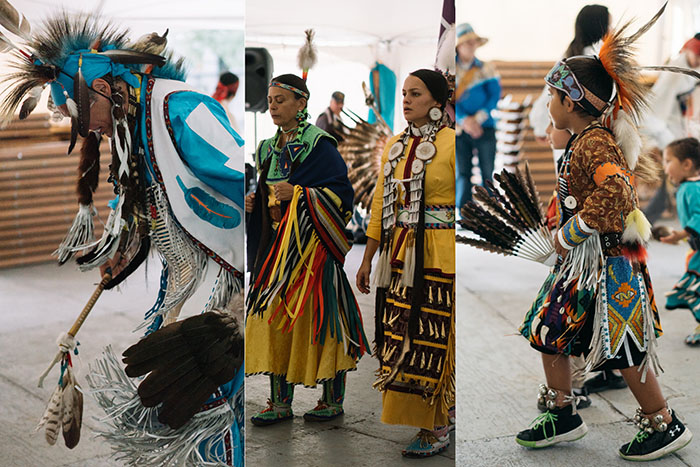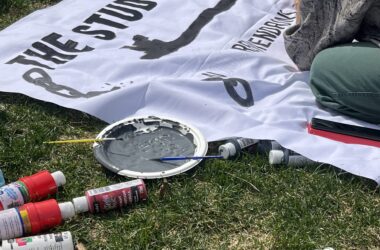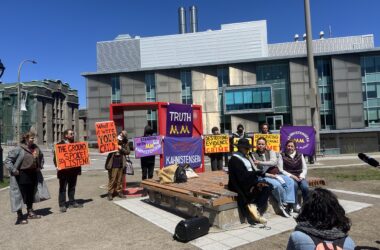McGill’s Faculty Club saw a change in decor on Sept. 17, when its historical paintings were replaced by artwork from local indigenous artists, welcoming guests to the opening event of McGill’s eighth annual Indigenous Awareness Week (IAW). Moreover, for the first time in McGill’s history, IAW’s length was extended from five to twelve days, giving more time for both cultural and academic events to take place. In total, 18 events are scheduled between Sept.17 to 28.
IAW provides an opportunity not only for McGill students to learn about indigenous culture, but also for some students to proudly embrace their heritage.
“Having the Pow Wow, having indigenous people from the West coast come in, it makes [McGill] feel like home,” Tomas Jirousek, the Students’ Society of McGill University (SSMU) Indigenous Affairs Commissioner, said.
The week began with a keynote speech delivered by Janelle Kasperski, indigenous education advisor in the Social Equity and Diversity Education office. Following Kasperski’s welcome, members of the Kahnawà:ke community performed traditional singing with rattles and water drums. As a member of the Nisga’a Nation of Laxgalts’ap BC, Kasperski sees IAW as an opportunity to share the beauty of indigenous culture.
“The point of [IAW] is just to celebrate success,” Kasperski said. “This week is about celebrating and looking at how many different nations there are across Turtle Island, Canada, and the United States. They have so many beautiful and varied talents that we really need to celebrate.”
Later in the week, the Indigenous Health Professions Program hosted a video-recorded panel discussion titled “Dismantling Racism in Healthcare and Education.” Tania Dick, president of the Association of Registered Nurses of British Columbia, began her talk with the story of Brian Sinclair, an indigenous man who died after spending 34 hours in a Manitoban hospital waiting room after hospital staff thought he was only there to watch TV. According to Dick, Sinclair’s story is all too common.
“Last year alone, we got to visit about 23 [indigenous communities in BC],” Dick said. “I’m not exaggerating, every single community had a Brian Sinclair story. That’s why we’re here today, that’s why the change needs to happen, and it’s that critical that people are dying because of what we’re talking about.”
Whereas panel discussions provided a platform to discuss important socio-political topics, cultural events were an opportunity for indigenous artisans and performers to demonstrate their craft. The pinnacle event was the 17th annual Pow Wow hosted on Lower Field. Even the deafening sound of rain could not dampen the spirits of the dancers and musicians under the tent, as the Hiawatha Belt—the flag of the Iroquois Confederacy—flew above the Arts Building. The Royal Canadian Mint used the opportunity to unveil a new silver coin that features a vibrantly-coloured dancer on the front.
While the weeks’ events comprise a praised celebration local excellence, some students believe that McGill needs to do more. According to Noah Favel, co-chair of SSMU’s Indigenous Student Alliance, McGill must make a greater effort to attract new indigenous students.
“Only 0.9 per cent of McGill’s student population is indigenous, which is one of the lowest in Canada [the average at Canadian universities is 3 per cent],” Favel said. “I think weeks like this help to promote identity and indigenous student presence on campus, which will spread to indigenous communities and encourage them to apply to McGill.”
Students who are interested in attending this weeks’ events can consult the IAWs website. Kasperski personally recommended that students attend a talk by Smokey Sumac on Sept. 27th, a PhD candidate whose work focuses on ‘coming home’ as a Ktunaxa adoptee and two-spirit person—someone who identifies as having both a masculine and feminine spirit.
“I’ve had the opportunity to work with [Smokey Sumac] in the past around indigenous perspectives, history, and storytelling,” Kasperski said.








